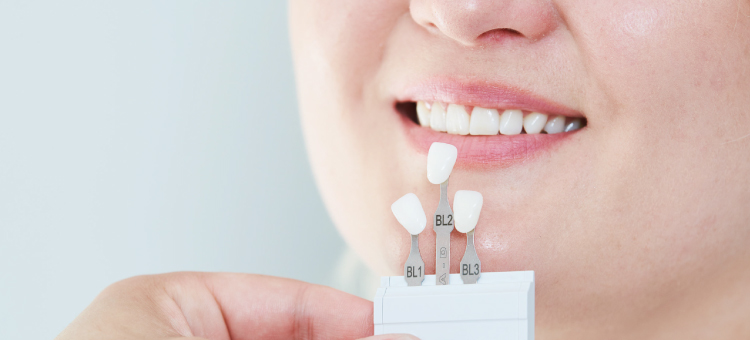Introduction
- Overview of Cosmetic Dentistry:
- Cosmetic dentistry refers to dental treatments that focus on improving the appearance of a person’s teeth, gums, and smile. Common procedures include teeth whitening, veneers, crowns, fillings, and dental bonding.
- Many individuals seek cosmetic dental procedures to correct dental imperfections like discoloration, misalignment, gaps, or damage. However, understanding how long these procedures last and how to maintain their effectiveness is crucial for making informed decisions.
- Purpose of the Essay:
- The aim of this essay is to explore the longevity of cosmetic dental procedures, focusing particularly on adhesives, crowns, and other common cosmetic treatments. Additionally, we will discuss factors influencing the lifespan of these treatments and how patients can maximize their durability.
1. Overview of Cosmetic Dental Procedures and Their Purpose
- Cosmetic Fillings and Bonding:
- Dental bonding and composite fillings are used to repair chips, cracks, or gaps in teeth. These procedures are commonly used to restore the natural appearance of teeth while maintaining function.
- The materials used for bonding and fillings (composite resin) have a relatively short lifespan compared to other cosmetic options but offer an affordable and effective solution for minor imperfections.
- Crowns:
- Dental crowns are typically used to cover a tooth that has been extensively damaged or weakened. Crowns are often made of porcelain, ceramic, or metal, and they provide a durable, long-lasting solution for damaged teeth.
- Porcelain and ceramic crowns are especially popular in cosmetic dentistry due to their natural appearance and ability to blend with surrounding teeth.
- Veneers:
- Veneers are thin shells of porcelain or composite resin that are bonded to the front of the teeth. They are used to correct discoloration, gaps, and minor misalignments.
- Veneers are highly aesthetic and offer an excellent way to enhance a smile, but their longevity and durability depend on proper care.
- Inlays and Onlays:
- Inlays and onlays are restorative solutions for teeth that have moderate decay or damage but do not require a full crown. These procedures involve placing custom-made fillings in the tooth, and they can last for years when properly maintained.
- Whitening:
- Teeth whitening is a non-invasive cosmetic procedure used to lighten the color of the teeth. Over time, the results of whitening treatments may fade due to lifestyle factors like diet and smoking.
2. Materials Used in Cosmetic Dental Procedures
- Porcelain:
- Porcelain is one of the most commonly used materials for crowns, veneers, and inlays because of its durability and natural appearance. Porcelain crowns and veneers are known to last many years with proper care.
- Composite Resin:
- Composite resin is commonly used for fillings, bonding, and veneers. While composite materials are less durable than porcelain, they can still provide satisfactory results, especially for minor cosmetic changes.
- Ceramic:
- Ceramic crowns and veneers provide a highly aesthetic solution for tooth restoration, with good resistance to wear and staining. However, they may be more susceptible to cracking than porcelain.
- Metal:
- Metal crowns, such as those made of gold, are incredibly durable and resistant to wear. However, they are less aesthetically pleasing than porcelain crowns and are often used in less visible areas of the mouth.
- Acrylic:
- Acrylic is sometimes used for temporary crowns and restorations. While it can provide a short-term solution, it is not as durable or aesthetic as other materials.
3. How Long Do Cosmetic Dental Procedures Last?
- Longevity of Adhesives and Bonding:
- Adhesives and bonding typically last between 5 to 10 years. However, they can be affected by factors such as chewing habits, the type of food consumed, and the patient’s oral hygiene practices.
- Bonding is more prone to staining and chipping than other cosmetic procedures. Patients should avoid habits like biting nails or chewing on hard objects to prolong the lifespan of bonding materials.
- Longevity of Crowns:
- The lifespan of a dental crown can vary based on the material used. Porcelain crowns typically last between 10 to 15 years, while gold and metal crowns may last longer, up to 20 years or more.
- Factors like teeth grinding (bruxism), heavy chewing, and poor oral hygiene can reduce the longevity of crowns.
- Longevity of Veneers:
- Veneers typically last 10 to 15 years, though porcelain veneers can last even longer when properly maintained.
- The wear and tear on veneers can depend on the individual’s oral habits, such as grinding teeth, and the condition of their gums and underlying teeth.
- Longevity of Inlays and Onlays:
- Inlays and onlays typically last between 10 to 20 years, depending on the material used (porcelain inlays typically last longer than composite resin inlays).
- Proper oral hygiene and avoiding hard foods or excessive force can help extend the life of these restorations.

4. Factors Influencing the Lifespan of Cosmetic Dental Procedures
- Oral Hygiene:
- Regular brushing and flossing are essential to maintain the longevity of any cosmetic dental procedure. Plaque buildup and cavities can compromise the effectiveness of bonding, crowns, and other restorations.
- Diet:
- A diet high in sugar or acidic foods can contribute to tooth decay and the wear and tear on cosmetic dental procedures. Avoiding frequent consumption of sugary or acidic beverages, such as soda or citrus, can help preserve cosmetic restorations.
- Teeth Grinding (Bruxism):
- Bruxism, or teeth grinding, can put significant pressure on dental restorations, leading to premature failure. Patients who grind their teeth may need to wear a nightguard to protect their cosmetic treatments.
- Smoking and Staining:
- Smoking can lead to staining of veneers, bonding, and crowns. Cigarette smoke contains chemicals that can break down the bonding material, reducing its durability. It is recommended to avoid smoking to maintain the appearance of cosmetic dental work.
- Accidental Trauma:
- Physical trauma to the mouth, such as a sports injury or car accident, can damage cosmetic dental restorations. Protective devices, such as mouthguards, can help minimize the risk of damage.
- Regular Checkups:
- Regular visits to the dentist can help identify any issues with cosmetic dental treatments before they become significant problems. Dentists can monitor the condition of crowns, veneers, and other restorations and provide adjustments or repairs if needed.
5. Caring for Cosmetic Dental Procedures to Extend Their Lifespan
- Brushing and Flossing:
- Brushing twice daily with fluoride toothpaste and flossing once a day are essential habits for maintaining cosmetic dental work.
- Avoiding Hard Foods:
- To avoid damaging bonding or veneers, it’s important to refrain from chewing on hard objects like ice, pens, or hard candy.
- Regular Dental Cleanings:
- Professional cleanings are important to remove plaque and tartar buildup that may accumulate around crowns or veneers. Cleanings help maintain the health of the gums and the longevity of the restoration.
- Nightguards for Teeth Grinding:
- For individuals who grind their teeth at night, wearing a custom nightguard can protect dental restorations and prevent unnecessary wear and tear.
6. When to Replace Cosmetic Dental Procedures
- Signs a Crown or Veneer Needs Replacement:
- Crowns or veneers may need to be replaced if they become chipped, cracked, or show signs of significant wear. Additionally, if a crown or veneer starts to detach from the tooth, it will require replacement.
- Signs of Wear in Bonding or Fillings:
- Bonding materials may show signs of wear, such as chips, cracks, or discoloration. Fillings that have worn down or become dislodged should be replaced to prevent further damage.
- Professional Evaluation:
- The longevity of cosmetic procedures depends on how well they are maintained. A dentist will evaluate the condition of restorations during regular checkups and advise when it is time for replacement or repairs.
7. Conclusion
- Summary of Key Points:
- The longevity of cosmetic dental procedures such as crowns, veneers, and adhesives depends on various factors, including the material used, oral hygiene, lifestyle choices, and regular dental care.
- By following proper care and maintaining good oral health practices, patients can extend the life of their cosmetic treatments and continue to enjoy a beautiful, functional smile for many years.
- Final Thoughts:
- Cosmetic dentistry offers many solutions for improving the appearance of teeth, but the longevity of these procedures requires effort from both the patient and the dental professional. With the right care and regular checkups, cosmetic dental procedures can provide lasting results that enhance not only the aesthetics of a smile but also the overall health and function of the teeth.













































Discussion about this post